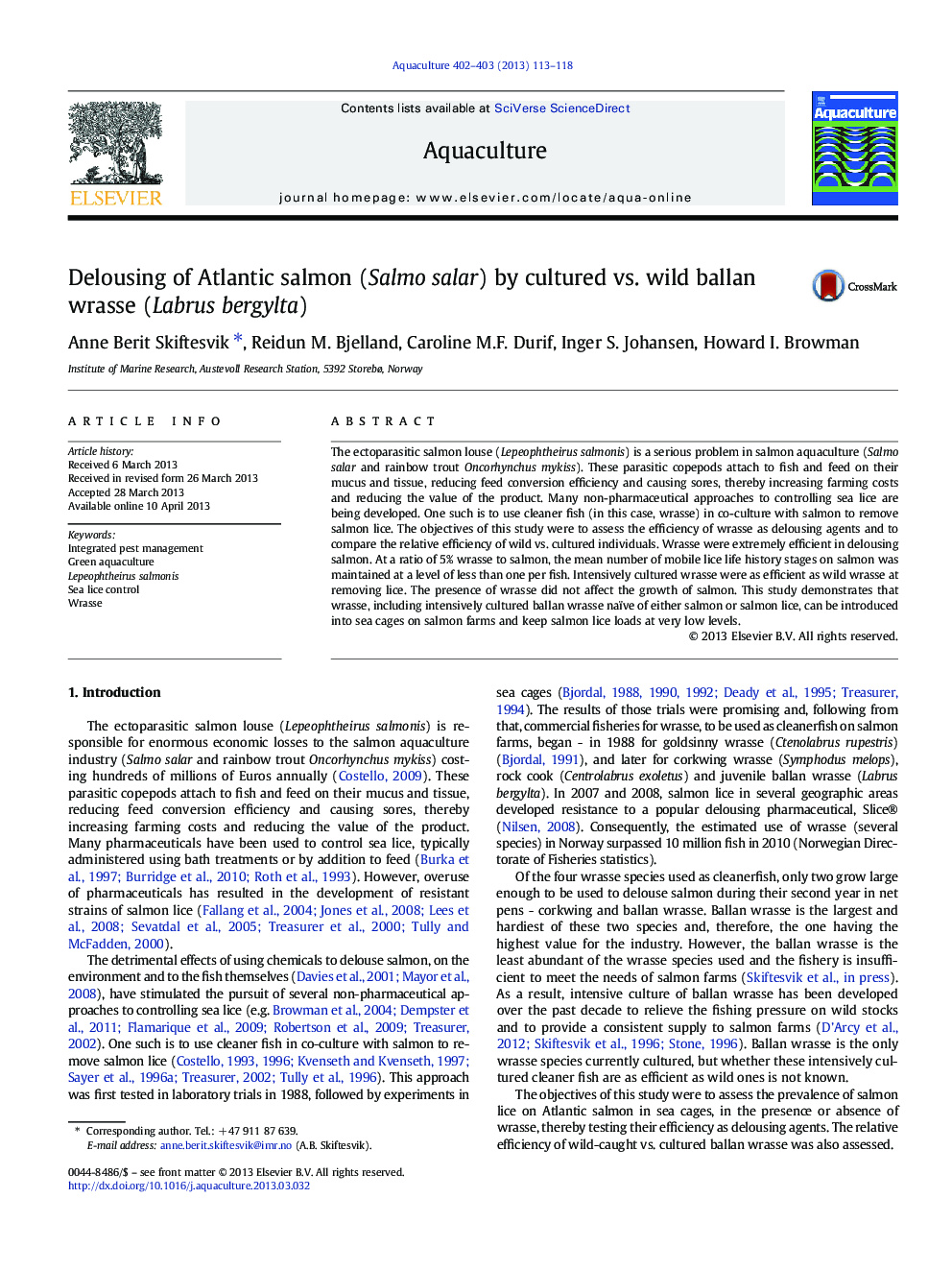| Article ID | Journal | Published Year | Pages | File Type |
|---|---|---|---|---|
| 2422107 | Aquaculture | 2013 | 6 Pages |
•The efficiency of wrasse as cleaner fish for delousing salmon was investigated•Both intensively cultured and wild wrasse were effective delousers•At a ratio of 5% wrasse:salmon, wrasse kept lice loads at very low levels
The ectoparasitic salmon louse (Lepeophtheirus salmonis) is a serious problem in salmon aquaculture (Salmo salar and rainbow trout Oncorhynchus mykiss). These parasitic copepods attach to fish and feed on their mucus and tissue, reducing feed conversion efficiency and causing sores, thereby increasing farming costs and reducing the value of the product. Many non-pharmaceutical approaches to controlling sea lice are being developed. One such is to use cleaner fish (in this case, wrasse) in co-culture with salmon to remove salmon lice. The objectives of this study were to assess the efficiency of wrasse as delousing agents and to compare the relative efficiency of wild vs. cultured individuals. Wrasse were extremely efficient in delousing salmon. At a ratio of 5% wrasse to salmon, the mean number of mobile lice life history stages on salmon was maintained at a level of less than one per fish. Intensively cultured wrasse were as efficient as wild wrasse at removing lice. The presence of wrasse did not affect the growth of salmon. This study demonstrates that wrasse, including intensively cultured ballan wrasse naïve of either salmon or salmon lice, can be introduced into sea cages on salmon farms and keep salmon lice loads at very low levels.
